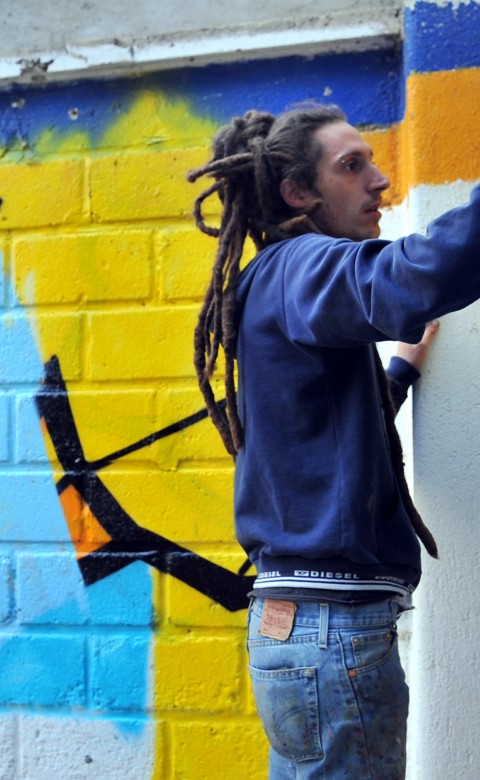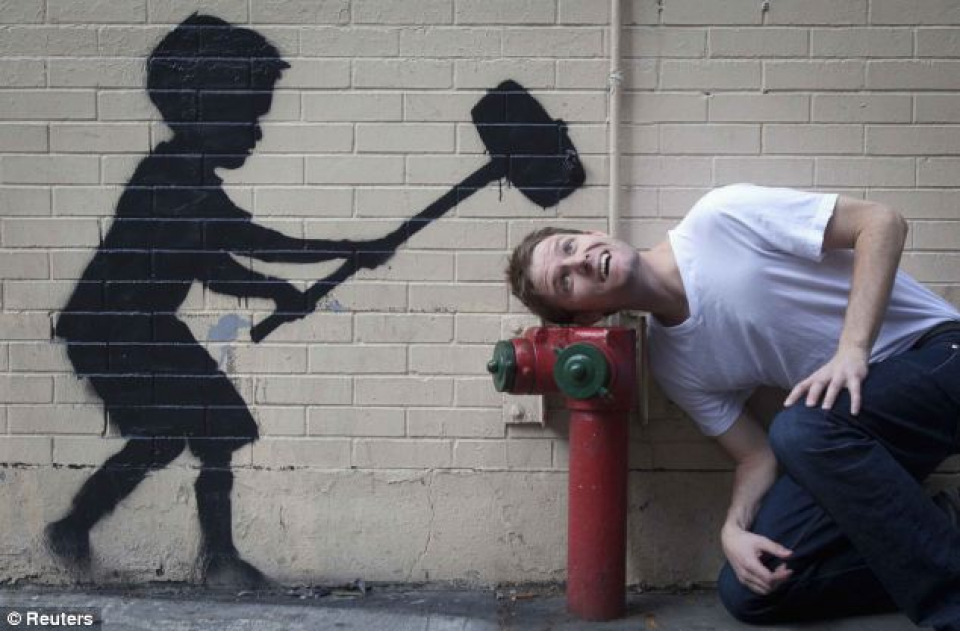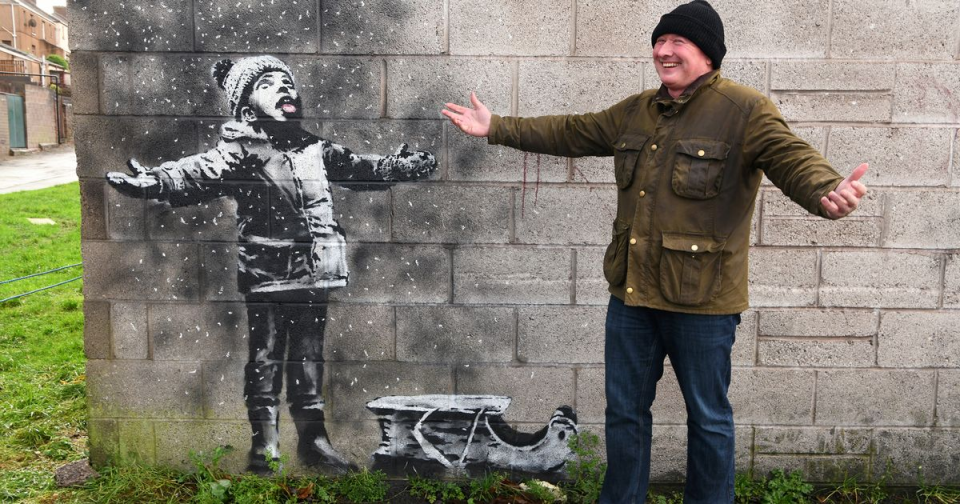You are here: Colonne di San Lorenzo
Art+Design
5vie event
digital event
Info
Colonne di San Lorenzo
Corso di Porta Ticinese, 45

Graffiti artists need to remain anonymous. It is not a
successful artistic strategy but a necessity that arises in relation to
prohibitionist laws regarding an expression, generally pictorial, that
sees the occupation of public and private spaces without the
authorization of the owners. It is for this reason that the pseudonym
was born: the tag. After so many years since the birth of metropolitan
graffiti we have reached the awareness that this kind of need is also
linked to social redemption: these New York boys, children of emigrants,
who probably had difficulty in realizing themselves during the day, at
night (wearing a different costume, as in a "second life") became
superheroes with the gift of ubiquity.
The "Banksy case",
however, is different. The choice to remain anonymous is not simply
dictated by the risk of being arrested because of illegal actions, but a
conceptual operation that constantly accompanies his artistic activity,
an altruistic gesture that in this case the author makes towards the
community to which he gives a pure aesthetic experience, free from
documentary or curricular information. A small revolution in the field
of cultural expression made in an underground context.
I would dare
to hypothesize a sort of distinction: graffiti is nothing but the name
of the author repeated to the point of nausea as in an advertisement of a
"phantom vandal", who invades people's lives without caring to create a
relationship with them; while in street art the author "disappears" to
make room for the work and the potential ties he can create with those
who come into contact with it.
In this way an exhibition short
circuit is created, in a random place, where only a relationship between
the work and the public remains. A new visual experience that opens new
values of acquisition. The public is aware that they are not inside a
place dedicated to art and they find themselves in front of an image
that may have been painted or stuck by anyone (who knows maybe it's my
neighbor's son!). This approach leads to perceive Banksy's action and
all street art as a popular expression, a voice of the people; as if
those thousands of phrases carried by little mice, which invaded London
between the late 1990s and early 2000s, are nothing more than the
thoughts of the people who materialize.
Banksy's work is studded
with images that we could all do, only he made them concrete: his
success lies in the fact that these images are closely linked and
contextualized to the times in which they were made; they are not
self-referential images (of classic graffiti), but a great visual
chronicle that comes out of newspapers or the news and invades the
cities.
The streets all over the world have been filled with an
awareness of facts of public interest, in step with the demonstrations
for the G8 in Seattle or Genoa. The desire to challenge what does not
fit us takes shape through the action of a small number of anonymous
authors who sometimes march in the square singing slogans (against the
capital) and sometimes fill the walls of the city. I am thinking of the
demonstrator who launches a bouquet of flowers instead of a petrol bomb.
Finally the success of Banksy (and street art) has also been amplified
by the internet and the possibility of sharing images that the network
has provided us.
The square also becomes virtual and the user becomes
an author who through his own channels can make his own the images he
has seen and photographed, reworking them and using them at will. Even
more the author disappears and street art becomes a repertoire of
images, placing on the same level author, work and user: an authentic
public cultural operation.
In this case Banksy may not even exist.




